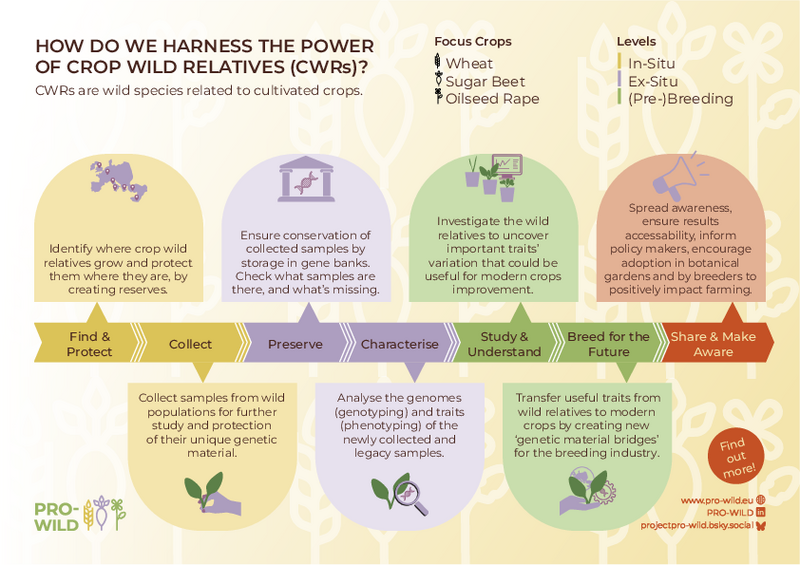PRO-WILD Background
Crop wild relatives (CWRs) are wild species that are genetically related to cultivated crops, and constitute a rich resource for crop improvement and food security. They contain genes that can enhance resilience to biotic and abiotic stress and the nutritional quality of their crop relatives.
The production of new varieties has been stressed by the Intergovernmental Panel on Climate Change as a critical means to mitigate the impacts of climate change.
Europe has a very wide diversity of endemic species that may be valuable for major crops. There are, however, major threats to CWRs represented by anthropogenic activities.
PRO-WILD's concerted approach fits into the general framework of the Farm to Fork Strategy that is at the heart of the European Green Deal aiming to make food systems fair, healthy and environmentally friendly.
Project Approach
PRO-WILD aims at contributing to the development of a sustainable European agriculture able to face major challenges, notably preserving biodiversity while ensuring food security in the frame of climate change, via the preservation, characterisation, and valorisation in breeding programmes of CWRs for three major European crops to be cultivated in a range of farming systems and pedo-climatic regions of Europe. PRO-WILD has set the four following objectives:
- O1: identify priorities for in-situ conservation of the CWR gene pools of wheat, rape and sugar beet
- O2: survey and complement CWRs available in genebanks (ex-situ) and review their conservation status
- O3: increase crops diversity using CWR gene pools
- O4: the awareness of stakeholders on the value of CWR is increased
In-situ conservation, which involves the establishment of genetic reserves or protected areas, is a way to preserve CWR genetic diversity. It also ensures continued natural genes exchange and constant evolution of CWR populations facing changing biotic and abiotic constraints.
Ex-situ conservation is complementary to in-situ conservation. It involves conserving species outside their natural habitat, for plants generally in genebanks. They offer easier access to genetic resources for breeding but represent only a sample of the present-day diversity.
Finally, tapping into CWR genetic diversity to improve crops usually requires intensive work, called pre-breeding, consisting in transferring, through a transitional set of genetic material, desirable traits to new varieties that are compatible with the economic and social goals of farmers, and all the value chain down to the consumers.

 tap and then scroll down to the Add to Home Screen command.
tap and then scroll down to the Add to Home Screen command.